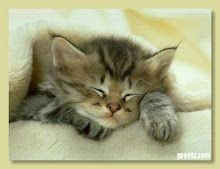Abstract
Kiswah a veil that covers the Kaaba. First introduced Kiswah since before the arrival of Islam. from the early days of Islam measuring 14 meters x 77 meters has decorated with embroidered gold and silver (and later Qur'anic verses), made with sophisticated tailoring shows each year to cover the Ka `bah during Hajj season. For the purposes of kiswah often dimpor Yemen or Egypt. Perpetuate a tradition since before the birth of Islam, historian of Mecca, al-Fasi related that the Prophet Muhammad covered the Kaaba with al-thiyab al-Khalifah successor Yamaniyah and clothe the Kaaba with clothing made of linen of Egypt.
Nevertheless, local and manufacture decorative inlay that often arises is ornate and intricate inlay. Caliph Uthman ibn Affan introduced brocade decorative embellishment on kiswah, a habit that appeared to have experienced increased growth over time rumitdengan. Although kiswah not until the early fourteenth century, according to al-Fasi, that the Qur'anic text first appeared. However Prophet Muhammad s.a.w. and his successor Caliph committed to manufacturing quality and frugality in producing kiswah, this event has been running until now.
In the past one year installation kiswah two or three times. Kiswah long kiswah closed with a new one. Since the Caliph Al-Nasir, Caliph Abasiyah start putting kiswah tradition at the Kaaba with one kiswah, until now. When the Caliph Abasiyah perform the pilgrimage at 160 after hijra, see the pile kiswah can damage the Kaaba itself. Then he decided to use only one kiswah. Caliph Al Ma'mun replaced kiswah three times per year, with a different color. 8 Dhulhijjah red, white gabati for 1 Rajab and red lace on 29 Ramadan.
By analogy, the relative costs, on average, with modern automated technology, khiswah-most new black, 5 pieces of silk cloth covering 658 square meters are needed to produce each year equivalent to 4.5 U.S. dollars U.S. dollars and takes more than 200 employees. Previously mentioned that women's clothing 100 dinars and dirhams in 1000 used thiyab said at the time of the Prophet Muhammad, not the sheet mentioned the Prophet's grandfather's grave reported plated with 1000 mistqal (4250 grams) of gold which has been known for its beauty has an amazing price.
source:http://journal.amikom.ac.id



